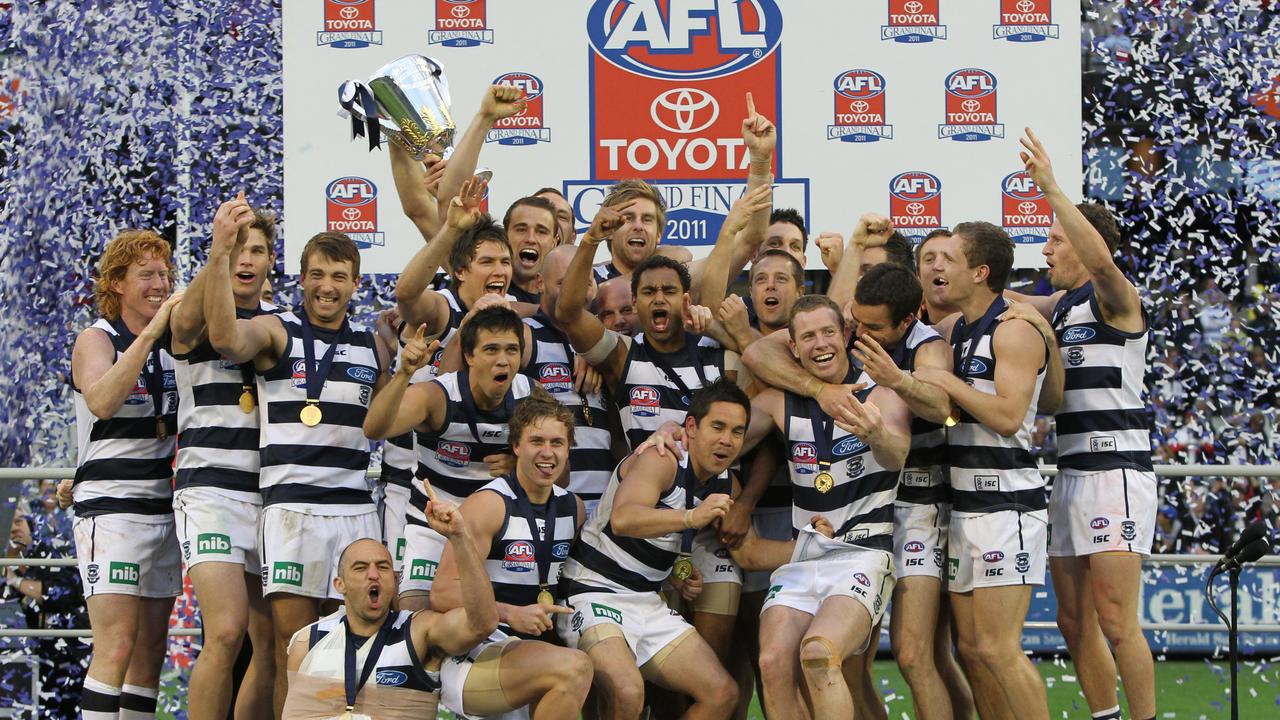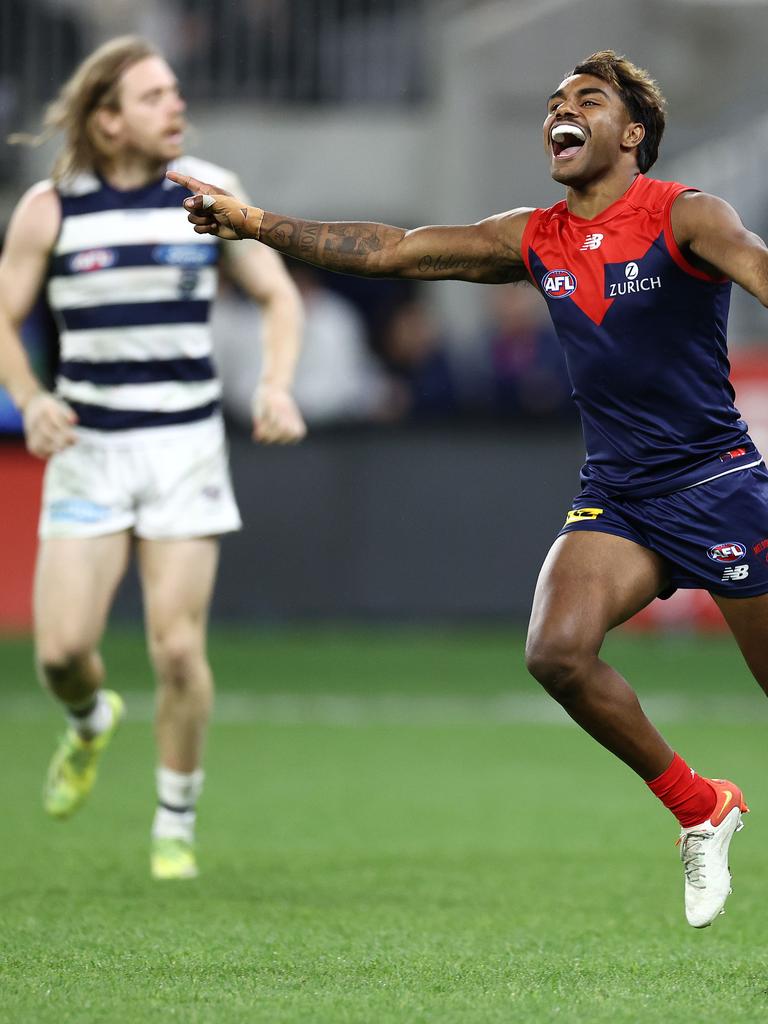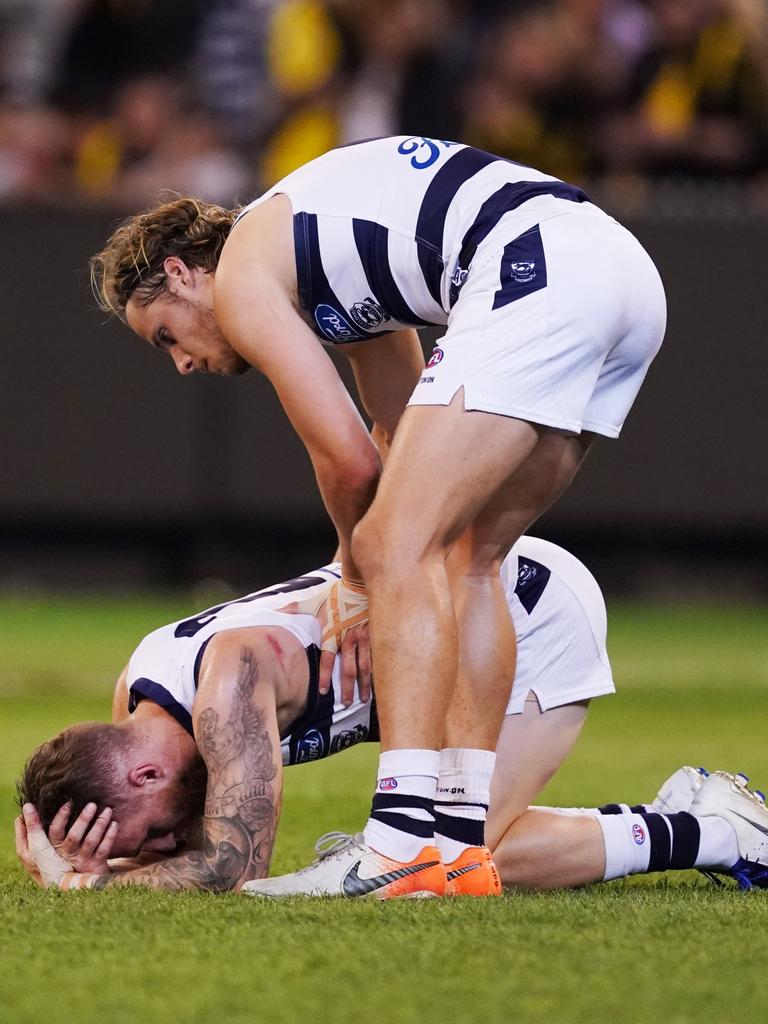AFL finals 2022: Mark Robinson previews premiership race, Geelong analysis
Geelong took a fresh look at its game plan this pre-season and the result was a dominant home-and-away season. Will it work in September? Mark Robinson investigates.
Long-time crooner Tom Jones could’ve been singing about Geelong at the start of the 2022 season.
What’s new pussycats?
That was the question on the eve of Chris Scott’s 12th season as coach, after the majority of his senior coaching staff up and left, and doubters were confident on cashing in on their years-long prediction that the Cats would finally run out of punch.
Too Old. Too stubborn. Too methodical. Too rigid for deep September football.
Watch every match prior to the AFL grand final Live & Ad-Break Free In-Play on Kayo. New to Kayo? Start your free trial now >
Fast forward eight months and on the eve of yet another final series, the Cats are revitalised, flexible, high-scoring and defensively sound.
What’s new pussycats?
Well, plenty in fact and, as we stand, they are the best placed team to win the premiership.
It’s by no means theirs to lose, because the pressure sits upon them as much as it’s upon any team.
Yes, the Cats of ’22 are the best team concocted by Scott since the 2011 premiership, and yes the Cats have lost too many qualifying finals than they’d like, and preliminary finals too, but that’s not important right now.

History is in the telling after the event.
The pressure on Geelong is to perform, it’s as simple as that.
It’s been a masterclass of coaching from Scott and his new cohort.
At the start of the season, part of the “new eyes and new ideas’’ approach, the Cats asked the new coaches what they thought of the recent game style, the list, “Tell us what we should be doing differently” and “tell us what you think we can do to get it done in September”.
“In terms of game style, we took about six weeks to say, ‘let’s approach this as if we’re a new group and if we’re just starting from scratch, so how would we do it?’,’’ Scott told the Herald Sun ahead of the season.
There’s been a whole bunch of strategies overplayed on that pre-season comment, but the fundamentalism was key: What do we do differently?
The Cats tweaked/manipulated ball movement, increased speed on the game, while maintaining a sound defence which is the cornerstone of Scott’s coaching.
The result has been increased scoring.
In their past four qualifying finals, they have scored five, five, seven and five goals, and among all that was six goals in an elimination final loss to Melbourne in 2018.
In their past nine matches this season, the Cats have kicked 19, 18, 17, 14, 16, 12, 12, 21, and 13 goals.


Their offensive profile from last season to this season has drastically changed.
Why?
At the start of the year, Scott wasn’t about to abandon philosophy and defensive strategy for boldness or risky football, but did he set about encouraging more instinctive footy, less prop and stop out of the back half, more corridor use, more adventure and less fear of turning the ball over?
“Yes, that’s definitely something we are looking at,’’ Scott said.
The Cats proved to be potent and grew to be flexible.
The forward group containing Hawkins (59 goals), Cameron (59 goals) and Stengle (46 goals) combined for 164 goals, while Brad Close (21 goals) and Gryan Miers (11 goals) are improved contributors.
Their talents shone, and quicker ball movement has helped.
They have found the best balance between offence and defence and defending turnover (ranked No.1) and scoring from turnover (ranked No.2). That’s an awesome profile.
Flexibility has been a key.
The back six is Stewart, De Koning, Zach Guthrie, Henry, Kolodjashnij and Bews, mixed with a splash of Tuohy, Duncan and occasionally Smith to pull the trigger.
They have Holmes on one wing and a mix of Tuohy, Smith, Duncan and Menegola on the other wing. That says plenty about Max Holmes’ standing within the team. He’s been a revelation and should be a huge factor in this finals series.

In the centre square, there’s Stanley, Cam Guthrie, Atkins, Blicavs, and a mix of Selwood, Dangerfield and Parfitt.
In the forward 50, there’s Hawkins, Cameron, Stengle, Close, Miers and Rohan and a mix of Dangerfield and Smith.
Blicavs in the middle works because Sam De Koning (majorly) and Zach Guthrie have stood up in defence, which has allowed All-Australian Blicavs to play the ol’ fashioned position called “ruck-rover’’.
There’s stability and flexibility in that squad.
Overall, they finished 18-4 with a percentage of 144, which was 14 per cent ahead of second-placed Melbourne. Their four losses were against Sydney (round 2), Hawthorn (round 5), Fremantle (round 7) and St Kilda (round 10).
The combined margin in their four defeats was 55 points, and 30 of them were against the Swans.
Plainly, they are the team to beat.
Their opponent this week, Collingwood, is the revelation of this season, and if the Pies win on Saturday and advance to the preliminary final, the city of Melbourne might just go bonkers.
That’s when the pressure will be heaped on the Cats.
But until then, they are the best team in the competition – and by some way.





